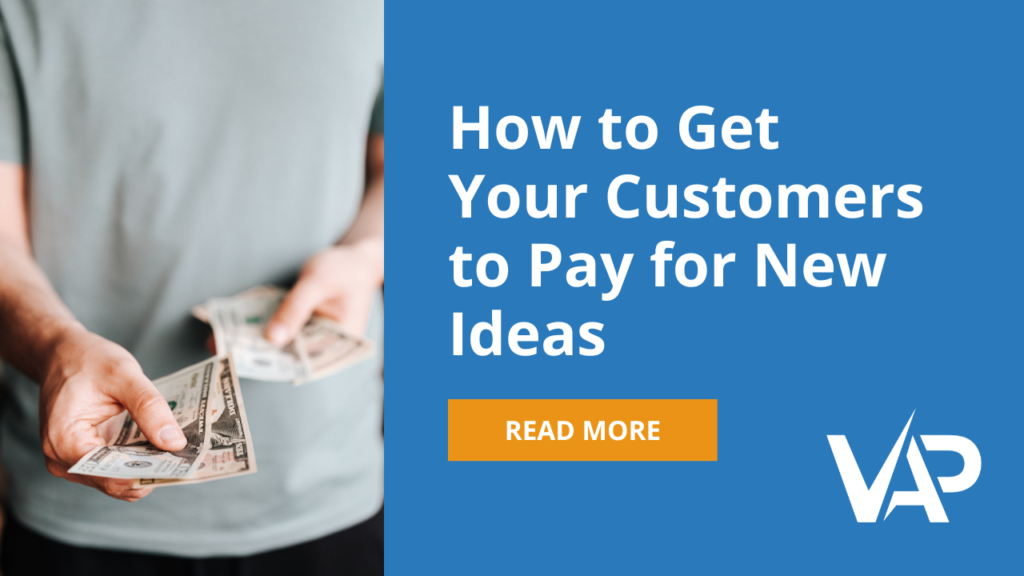There is never enough money to invest in developing products when you’re running a self-funded business. When you’re running your company out of cash flow, most of your resources go into selling your existing products and services, leaving little left over to fund your new product ideas.
You could keep plugging away with your existing product or service lineup, but you will leave yourself exposed to competitors that dream up a better offering. The other option is to develop unique new offerings for customers that ask you to customize your solution, but that can eliminate any scale in your business as you end up developing something unique for every opportunity.
The other option is to offer to develop a custom product for one client with the understanding that you will retain the rights to the intellectual property (IP) associated with developing their unique solution.
The most famous example of getting your customer to fund your new product development comes from Microsoft. As legend has it, co-founder Bill Gates negotiated a deal with IBM that paid Microsoft $430,000 to develop the DOS programming language, which IBM was given a license to use. However, Gates retained ownership over the code, which allowed him to sell it under the MS-DOS brand.
How Brian Ferrilla Got a New Product and a Premium Valuation
In a more recent example, Brian Ferrilla ripped a page out of Bill Gates’s playbook when he started Resort Advantage to help casinos adhere to new anti-money-laundering laws. Criminals were laundering money through casinos, and Ferrilla’s software helped casinos spot the bad guys.
Ferrilla started by selling a simple version of his product to small casinos and eventually got a call from MGM, the granddaddy of casino operators. MGM needed extensive customizations to Ferrilla’s product, but instead of building a custom solution that MGM would own, Ferrilla offered to waive the customization charges in return for retention of the ownership of the product.
Ferrilla reasoned that since MGM was one of the biggest players in the gaming industry, whatever levels of security and features they wanted, other operators would also value.
MGM got their custom solution, and Ferrilla retained the rights to an underlying product that the entire gaming industry valued. In the end, Ferrilla was glad he kept the rights to his IP when his $3 million business, with just 15 employees, was acquired for more than $10 million.
Had he slipped into the trap of making custom software for each of this customers, Ferrilla’s business would have likely been worth less than half that as custom software development shops offering a unique solution for each customer usually trade at around one times annual revenue.
Think About Making Your Customer Your Partner on a New Product or Service
Another spin on the same concept would be to approach a key customer on becoming a partner in the development of a new idea. I am not referring to a financial partner but, rather, more of pilot program partner. In many cases, the development of a new product or service really just needs a customer that will patiently work with you while you work through the inevitable issues.
Often times, the biggest challenge with getting a new product or service off the ground is finding a place to test and refine it. Most of the time, clients never want to be the guinea pig. They are happy to work with you once the kinks have been worked out and they don’t have to expose themselves to any risk.
Of course, to get a client to take a risk, the have to benefit from serving in this role for you as well. Here are a few ideas to consider:
- If the new product or service offers a real benefit to them (assuming it works), perhaps you will not need to offer much more incentive.
- Offer exclusive access to it for a period of time.
- Offer a revenue share or some other participation in the value creation.
The biggest risk in new product development is that the company will invest a lot of resources and then nobody will buy because they don’t want to be the test case. Finding a partner that is willing to work with you, even if you have to offer meaningful incentives, goes a long way to reducing your risk.

